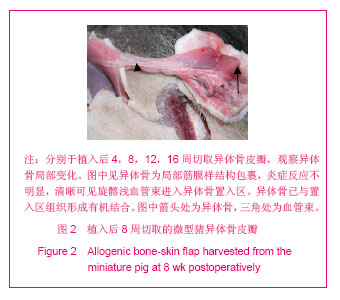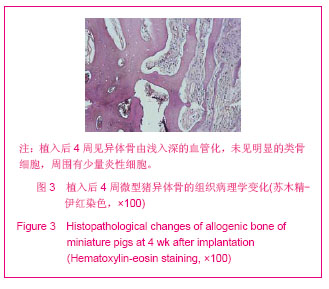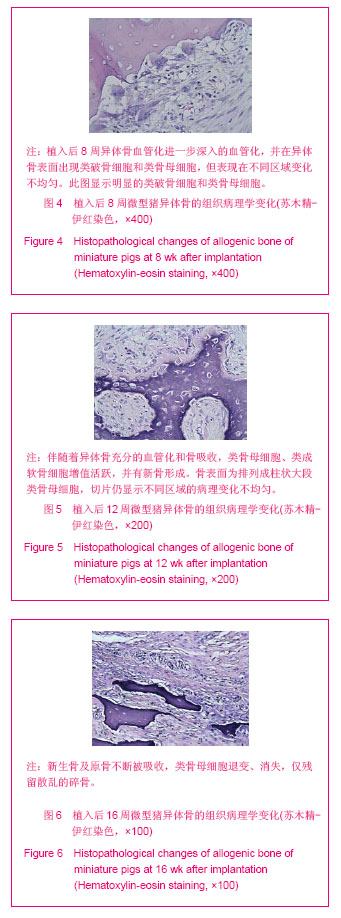| [1]郑晓菊,王保山,李海军,等.多方式腓骨及皮瓣移植修复四肢骨及软组织缺损[J].中华显微外科杂志,2011,34(5):376-378.
[2]徐锦程,卢保全,黄全顺,等.游离前臂皮瓣联合髂骨同期修复重建口底及面下部的复合性组织缺损[J].中华显微外科杂志,2011, 34(4):283-286.
[3]Liu X, Zhang C, Li Z, et al. Free iliac flap grafting for repair of tibia traumatic osteomyelitis complicated with bone-skin defect. Zhongguo Xiu Fu Chong Jian Wai Ke Za Zhi. 2007; 21(9):928-931.
[4]Jia H, Cheng C, Lv S ,te al.Clinical application of tibial bone-skin flaps in treatement of infective bone-skin defects of leg. Zhongguo Xiu Fu Chong Jian Wai Ke Za Zhi. 2007; 21(1): 30-33.
[5]栗威,严茂军,赵劲民.皮肤缺损与皮瓣修复治疗的分析与思考[J].医学与哲学:临床决策论坛版,2007,28(11):38-39.
[6]贾万新,侯明钟,沈尊理,等.冷冻异体手指骨与关节移植后长期的X线影像学表现[J].中华手外科杂志,2002,18(3):159-160.
[7]赵基栋,钱寒光,苗宗宁,等.纳米晶羟基磷灰石胶原复合骨髓间充质干细胞修复骨缺损[J].中国组织工程研究, 2010,14(42): 7971-7975.
[8]Schubert T, Lafont S, Beaurin G,et al.Critical size bone defect reconstruction by an autologous 3D osteogenic-like tissue derived from differentiated adipose MSCs.Biomaterials. 2013;34(18):4428-4438.
[9]Wu DJ, Hao AH, Zhang C,et al.Promoting of angiogenesis and osteogenesis in radial critical bone defect regions of rabbits with nano-hydroxyapatite/collagen/PLA scaffolds plus endothelial progenitor cells.Zhonghua Yi Xue Za Zhi. 2012;92(23):1630-1634.
[10]杨镟凝,董青山,雷德林,等.血管束法构建血管化组织工程骨支架材料的组织学观察[J].口腔颌面外科杂志,2009, 19(1): 5-8.
[11]Zhao M, Zhou J, Li X, Fang T ,et al.Repair of bone defect with vascularized tissue engineered bone graft seeded with mesenchymal stem cells in rabbits. Microsurgery.2011; 31( 2): 130-137.
[12]Beier JP,Horch RE,Hess A,et al. Axial vascularization of a large volume calcium phosphate ceramic bone substitute in the sheep AV loop model. J Tissue Eng Regen Med. 2010; 4(3): 216-223.
[13]游永刚,徐永清,唐辉,等.三种骨移植材料的骨诱导活性对比实验研究[J].中国矫形外科杂志,2009,17(4):297-300.
[14]廖凤春,周诺,黄旋平.冻干骨在骨缺损修复中的研究进展[J].中国矫形外科杂志,2012,20(22):2057-2059.
[15]Krasny K, Kamiński A, Krasny M,et al.Clinical use of allogeneic bone granulates to reconstruct maxillary and mandibular alveolar processes. Transplant Proc. 2011;43(8): 3142-3144.
[16]杨磊,刘光军,王谦,等.异体骨复合移植的研究进展[J].实用医药杂志,2012,29(10): 952-955.
[17]张志宏,刘志礼,高志增,等.骨修复替代材料修复骨缺损的选择与应用[J].中国组织工程研究,2012,16(52):9836-9843.
[18]左健,康建敏,潘乐.同种异体骨移植用于骨缺损修复的应用现状[J].中国组织工程研究,2012,16(18): 3395-3398.
[19]栗向东,胡蕴玉.庆大霉素对兔成骨细胞增殖及超微结构的影响[J]. 中华骨科杂志, 1999,19(3):177-179.
[20]天飞,蒋登金,左艳芳,等.贵州小型香猪麻醉方法的比较研究[J].中国比较医学杂志,2004,14(2):112-114.
[21]Reyes R, Pec MK, Sánchez E,et al. Comparative, osteochondral defect repair: Stem cells versus chondrocytes versus Bone Morphogenetic Protein-2, solely or in combination. Eur Cell Mater. 2013;25:351-365.
[22]Jo JH, Kim SG, Oh JS.Bone graft using block allograft as a treatment of failed implant sites: clinical case reports. .Implant Dent. 2013;22(3):219-223.
[23]Koylass JM, Valderrama P, Mellonig JT.Histologic evaluation of an allogeneic mineralized bone matrix in the treatment of periodontal osseous defects.Int J Periodontics Restorative Dent. 2012;32(4):405-411.
[24]李春威,张洋,于磊,等.兔同种异体眶骨移植研究[J].眼科研究, 2010,28(9):860-863.
[25]郭世炳,冯卫,贾燕飞,等.异体冻干小块骨修复良性骨肿瘤及瘤样病变切刮术后骨缺损[J].中国修复重建外科杂志,2007, 21(8): 789-792.
[26]Buecker PJ, Gebhardt MC. Are fibula strut allografts a reliable alternative for periarticular reconstruction after curettage for bone tumors? Clin Orthop Relat Res. 2007;461(8):170-174.
[27]Smrke D ,Gubina B ,Domanovic D. Allogeneic platelet gel with autologous cancellous bone graft for the treatment of a large bone defect. Eur Surg Res. 2007;39 (3):170-174.
[28]黄长明,王臻,童星杰,等.大段同种异体骨移植愈合的实验研究[J].骨与关节损伤杂志,2000,15(5): 355-358.
[29]Urist MR,Strates BS. Bone formation in implants of partially and wholly demineralized bone matrix. Clin Orthop Relat Res. 1970;71: 271-278.
[30]王垚,李琪佳,孙瑞军,等. VEGF及微血管密度在同种异体骨及自体骨移植修复兔桡骨缺损中的表达[J].中国修复重建外科杂志, 2010,24(2):230-234.
[31]鲁开化,曹景敏,王臻.预制皮瓣基础与临床应用[J].中华手外科杂志1998,14(4):197-199.
[32]马旭.预构皮瓣再血管化的研究进展[J].中国美容医学,2011, 20(4):691-693. |



.jpg)
.jpg)